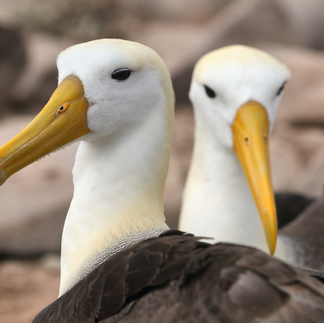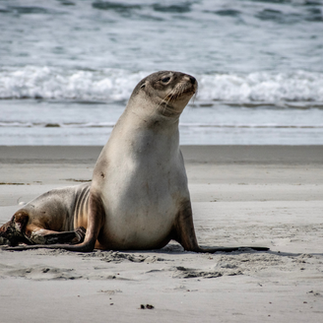Minister needs to adopt five-point plan to transform NZ fisheries
- Natalie Jessup
- Jul 6, 2023
- 3 min read
Updated: Aug 14, 2023
The Our Marine Environment 2022 report from the Ministry for the Environment shows very clearly that protections for the ocean have not gone far enough. As a result most marine environments are in decline, and many of New Zealand’s marine species are now threatened with extinction.
It is well established that commercial fishing has played a large role in the decline of ocean health, and therefore any plan related to this industry’s future must be ambitious in order to turn things around.

Photo: Silvia Scali
This submission, written by the Deep Sea Conservation Coalition, of which ESF is a member, urges the Minister of Oceans and Fisheries to reject this plan, and instead adopt a five-point plan that would truly transform New Zealand fisheries in a way we can all be proud of.
The draft Fisheries Industry Transformation Plan (FITP), is not just a missed opportunity to truly transform New Zealand’s fishing industry, but a plan that risks locking in the status quo.
The draft FITP fails to take much-needed steps such as protecting ancient corals, sponges and other vulnerable deep-sea life by banning bottom trawling on all seamounts and features, and does not signal a transition away from bottom trawl fishing methods that the New Zealand fishing industry remains heavily reliant upon, to the detriment of the marine environment. Furthermore, the plan includes proposals that could further entrench bottom trawl fishing methods, such as the inshore fleet renewal programme, which would see taxpayer funding going towards building new bottom trawl and dredge-capable vessels.
We are right now facing the twin crises of biodiversity loss and unprecedented climate change. If the Ministry of Primary Industries thinks that the answer to “how should we transform our fisheries?” is to provide taxpayers’ money to fishers to build new trawlers and dredgers, it has asked the wrong question of the wrong people.
A five-point plan to genuinely transform New Zealand’s fisheries.
We urge the Minister of Oceans and Fisheries to reject this plan, and instead adopt a five-point plan that would truly transform New Zealand fisheries in a way we can all be proud of.
Below are the urgent and clear steps that the New Zealand government must take, which would genuinely transform the industry:
Implement the ecosystem approach and precautionary principle to protect marine biodiversity
Urgent steps to restrict, and an overall deadline to end, bottom trawling
Reducing the carbon footprint of New Zealand fisheries
Reform the industry and institutions, and address poor agency culture
Genuine transparency and public involvement
You can read the full submission here:
What can you do?
You can contact Hon Rachel Brooking, Minister for Oceans and Fisheries, to voice your concerns and support this submission and five-point plan:
List MP based in Dunedin and Otago - NZ Labour Party
Phone: 04 817 8807
Email: rachel.brooking@parliament.govt.nz
NZ fishing fleets kill many endangered species in local and international waters
Experts say rare albatross will be extinct by 2050 if more isn't done to prevent bycatch. It's estimated fishing kills almost 13,000 seabirds in New Zealand waters a year. We need to impose much strictest controls on surface longline vessels to reduce deaths [1].
In May an endangered Hector's dolphin died in a fishing net off the coast of Otago. Hector’s dolphins are classified as "nationally vulnerable", with South Island populations between 12,000 and 18,500 [2].
Data, released by the Ministry for Primary Industries, shows that in a six-month period, over 400 seabirds were killed, including albatross, crested penguins and hoiho – which are unique to New Zealand. With only 5,000 remaining in the wild, hoiho are one of the most endangered penguin species in the world. Commercial fishing also killed 27 fur seals in the same time period [3].
In the 2021-2022 fishing year commercial fishing killed 956 seabirds, 154 fur seals, seven sea lions and 18 dolphins including 12 common dolphins, 2 dusky dolphins and 2 bottlenose dolphins [4].
In the 2021-2022 fishing year commercial fishing hauled in over 6,000kg of coral, sponges and bryozoans [5].
Internationally NZ fishing fleets continue to bottom trawl for orange roughy, causing irreversible harm to coral reefs which can take centuries to recover [6]. Orange roughy is classified as an endangered deep-sea species in Australia. Yet every year the New Zealand industrial factory trawler fleet goes to Australian waters off Tasmania to target orange roughy stocks [7].
Southern bluefin are classified as critically endangered, and Pacific bluefin populations are at only 4% of historic levels. The dire state of the southern bluefin population hasn’t stopped the New Zealand government from repeatedly increasing the local fishing quota.
[1] https://www.newshub.co.nz/home/new-zealand/2023/06/experts-say-rare-albatross-species-will-be-extinct-by-2050-if-more-isn-t-done-to-prevent-bycatch.html [2] https://www.odt.co.nz/news/dunedin/hectors-dolphin-dies-fishing-net-otago-coast [3] https://www.greenpeace.org/aotearoa/press-release/shocking-new-fishing-industry-by-kill-data-released/ [4] https://www.greenpeace.org/aotearoa/press-release/shocking-new-fishing-industry-by-kill-data-released/ [5] https://www.greenpeace.org/aotearoa/press-release/shocking-new-fishing-industry-by-kill-data-released/ [6] https://www.marineconservation.org.au/orange-roughy-research-shows-long-lived-fish-must-be-left-to-recover/?fbclid=IwAR1_UyixVFe94A0ARMcnWrH4_kazlrkaIyFzii7kAatex3yw9lQ5LfSmN_A [7] https://www.marineconservation.org.au/orange-roughy-research-shows-long-lived-fish-must-be-left-to-recover/












